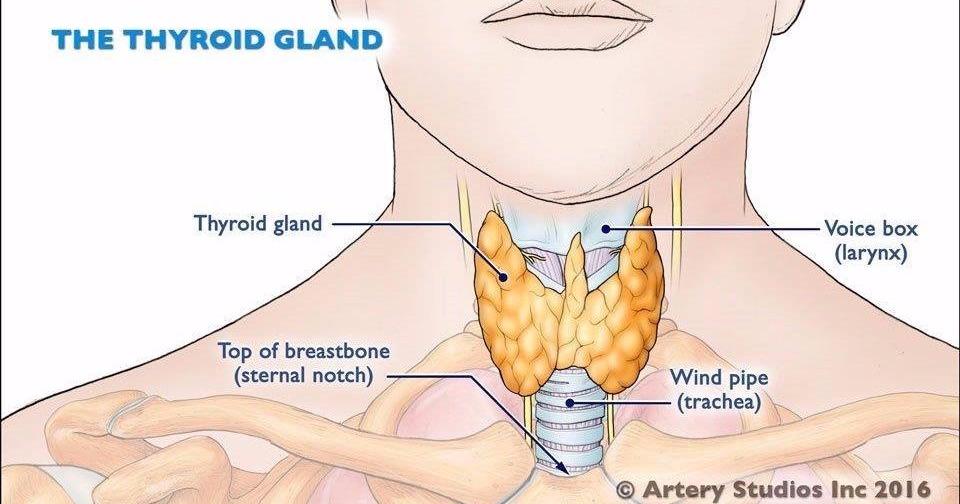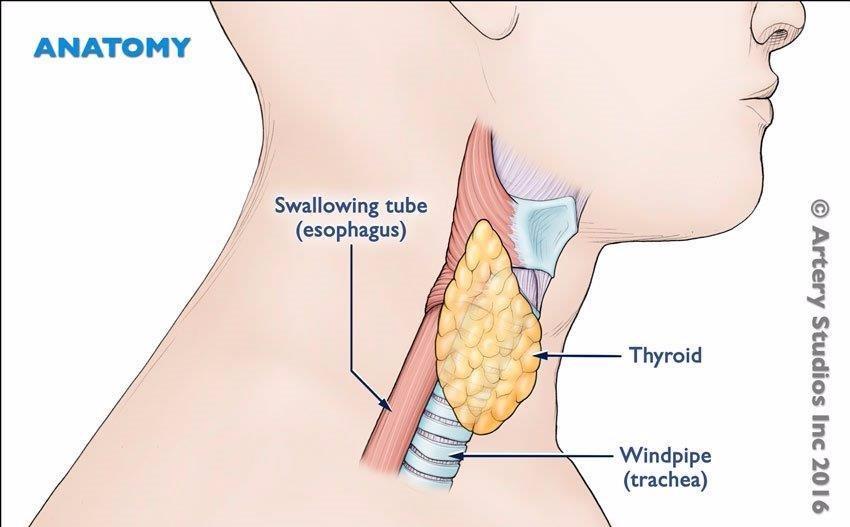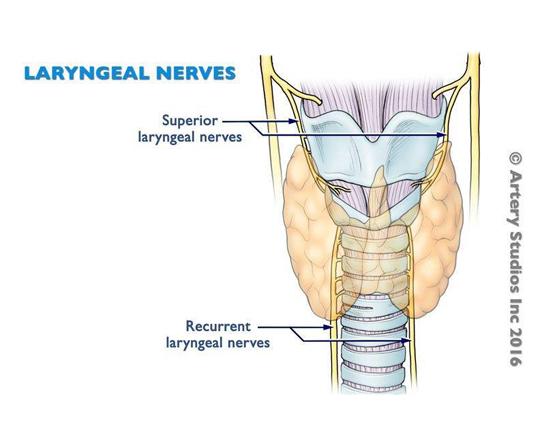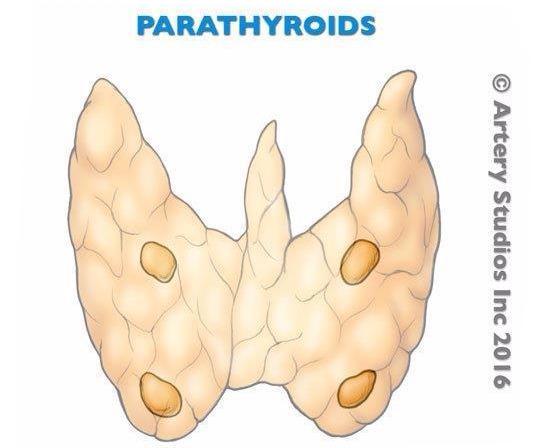Important anatomy
The trachea:
- The trachea, or windpipe is the tube that connects your upper airway to your lungs. In the case of very large goiters, your trachea can be compressed and you could experience shortness of breath. Note that most thyroid cancers do not cause any compressive symptoms on the trachea.
The esophagus:
- The esophagus, or swallowing tube, is the tube that connects your mouth to your stomach. It lies right behind the trachea. In the case of very large goiters, your esophagus can be compressed and you could experience difficulty swallowing or the feeling of food getting stuck in your throat. Note that most thyroid cancers do not cause any compressive symptoms on the esophagus.
The recurrent and superior laryngeal nerves:
- The recurrent and superior laryngeal nerves innervate the muscles of your voice box (larynx), including your vocal cords.
- They both lie very close to the thyroid gland on each side
The parathyroid glands:
- The parathyroid glands are 4 small glands that lie just behind the thyroid gland. Their function is to secrete a hormone that regulates your blood calcium.






